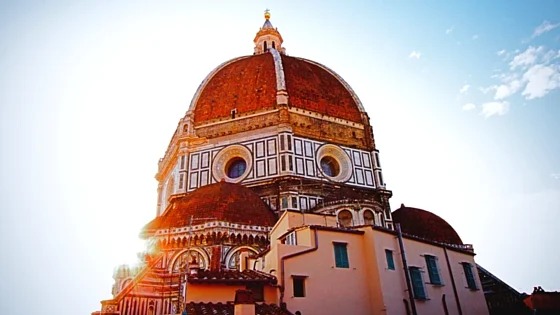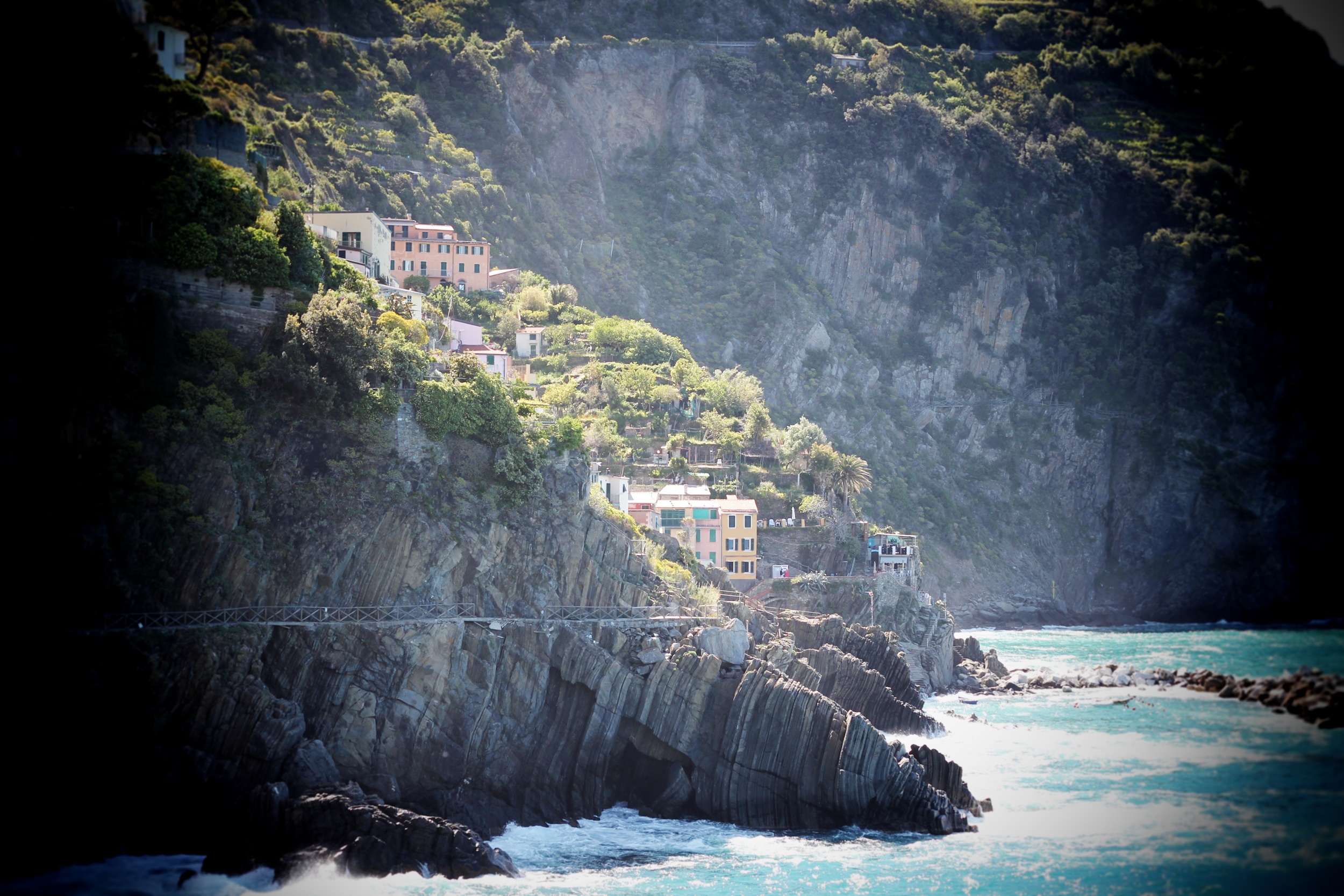After 10 years of traveling to Italy, I've compiled a list of things every traveler must know before visiting this incredible country. With these tips in hand, travelers are bound to have a much easier time navigating the many confusing customs of Italy.
1. Ordering in Italy
Reviewing the menu at an Italian restaurant can be confusing, especially with all of the different courses. Let me start by saying, no you do not have to order one of each! Typically ordering 2 courses from any area of the menu is acceptable, with dessert being optional. Here's a quick breakdown: Apertivo = pre dinner drink | Antipasto = appetizer (I always think of it as the pre pasta dish) | Primo = first course, usually a pasta dish | Secondo = second course, usually a meat dish with or without sides (often sides must be ordered separately, on the menu as "Il Contorno" | Dolce = dessert. Personally, I usually order an apertivo (appetizer) and a primo (pasta dish), maybe some dessert and definitely wine. Let's talk wine for a second... now I'm not a big drinker, but one thing you'll quickly realize in Italy is that wine is cheaper than water. Seriously. So with both lunch and dinner I often order a 1/2 or full liter of house red or white wine (vino de casa rosso or blianco). Unlike many other countries, house wine in Italy is actually delicious, often locally grown and completely acceptable to order, usually costing less than a single glass of wine in the states. A couple final tips about ordering drinks - soft drinks rarely if ever come with ice (good luck asking for some) and when ordering water, you'll want to specify "no gas" if you want still water. I found this excellent blog, Postcards from Italy, that goes into even more detail in their post Ordering at a Restaurant in Italy: Rules and Exceptions.
2. Tipping in Italy
As throughout most of Europe, tipping expectations are very different from American standards. Here's a breakdown of the most common places to tip: Restaurants - Italians rarely tip except for at really nice restaurants and even then, 10% is considered a good tip. Check your bill first before tipping, as some places state "Servizio Incluso", meaning the tip is already included and there is no need to tip anything additional. Tourism has unfortunately changed things slightly and restaurants catering to tourists can expect more, so if you receive good service, rounding up your bill would be enough rather than a percentage of your total or a few $1-2 coins (ex. Bill is $22, leave $25). Taxis - Simply round up to the nearest dollar, no more than $1-2. Bellman - the same as the US, $1-2 per bag is acceptable. Tour Guides - For paid tours, tipping an additional $5-10 euro is sufficient, but not necessary, where free guides should definitely be tipped if they have done a nice job. For more tipping tips, check out Rick Steve's Tipping in Europe guide.
3. Deciphering Your Restaurant Bill
Understanding your check at the end of a meal is another one of Italy's great mysteries... just kidding, it's actually fairly straight forward if you know what you're looking at. There are 2 words to look out for when reviewing a restaurant's menu often in tiny, fine print: Coperto = cover charge and Servizio = service charge/included tip. You may see, only one, both or none of these depending on the restaurant and you are more likely to be charged these costs in high tourism areas and larger cities. The Coperto is charged per person usually ranging from $1-5 euro and the Servizio is usually a percentage of the total bill often around 10%. You should definitely review the menu or ask the host prior to dining if these charges are included, which is completely acceptable to do. There is little you can do about these charges, it's kind of like our tax and tip in the US, except that it is completely arbitrary and up to the restaurant how much they want to charge, if anything. However, although I've never experienced this, according to Europe Off the Beaten Path, if you ask the host before sitting if there is a charge and you refuse to dine because of the charge, they may offer to remove that cost from your bill if you dine with them.
4. Customer Service Expectations
The simple answer is, don't have any expectations when it comes to service and you'll have a nice time. Customer service is relatively non existent throughout Italy, it's just not a cultural expectation like it is in The States. Don't get me wrong, no one has ever yelled at me or thrown things, I just rarely find kind, attentive, curteous service when I'm in Italy - which I want to say doesn't bother me much if I set my expectations appropriately. I find Italians to be much more willing to go after what they want when they want it rather than waiting for someone to figure it out for them - so when I'm in a restaurant I make eye contact and flag someone down when I want to order, when I need a refill or when I want my check. If I wait around for someone to come on my timing, I could be waiting there all night... literally, servers will abandone you at the end of a meal until you ask for the check as they do not want you to feel rushed out the door so simply saying "Il conto per favore!" (check please!) will do the trick.
5. Bartering and Haggling
Anytime you are shopping in local markets like the San Lorenzo Market in Florence and even local shops, you are welcome (and often expected to) barter for the right price. Through our travels we have bought dozens of items like leather bags, wallets, shoes, scarves and hats to take home but I rarely ever pay the asked price unless I'm shopping at a major retail store. Here's the strategies that I go with: Shop around for similar items to get a feel for an average price, wait for the shop owner to throw out a price no matter how many times they ask me how much I want to pay, offer half that to start the haggling process, bundle multiple items together for a single group price and always be willing to walk away. It's a process that can be intimidating and exhausting initially, but once you get the hang of it you'll feel like a local. For some additional training on the art of Italian bartering, here's a useful article from ReidsItaly.com - The Fine Art of Haggling.
6. Avoiding Scams and Petty Theft
In all of my time traveling to Italy, I have never been swindled, scammed or felt in danger (ok there was that one time on a train to Naples I watched a guy stick a needle in his arm to get high...), but petty crime is common and happens often to unsuspecting, aloof tourists. By being aware of what to look for, securing my valuables and never letting my guard down in large crowds I've been able to avoid theft so far. I would highly suggest reading my blog post Travel Safety: Keeping Your Things Secure While On Vacation which outlines all of my personal tricks when traveling abroad and Rick Steve's list of common cons Tourist Scams and Rip-Offs. In addition, do not accept anything that is being handed to you as you walk by as you will be hassled to pay for it (I've even had someone try to hand me a dead leaf), don't fall for ordering the "Italian Special" at restaurants unless you know the exact cost and what it includes first (my husband fell for that one once) and don't buy the knock off purses from the illegal street vendors as it is illegal and you can get ticketed by police.
7. Traveling Between Cities
When traveling between cities in Italy, busses and trains are often your best and easiest option. It's helpful to look at both options and not just assume that the train is your best bet: for example, I prefer to fly into Pisa to get to Florence (it's usually cheaper) and there are large, air conditioned charter buses that take you directly to the Florence city center for around $10 euro and it keeps me from having to haul my luggage through busy train terminals. I find the bus systems to be more enjoyable than the trains, inexpensive and at times faster than trains. Once you are in a city, you will easily be able to get around on foot, by metro in larger cities like Milan and Rome or by taxi when absolutely necessary.
8. Speaking Italian
In most tourist cities like Florence, Rome, Venice and Milan, you won't have any problems getting by with just English, but in smaller towns it can be much harder. Knowing key phrases is helpful no matter where you are and downloading an English - Italian translator app will definitely come in handy. Fodor's has a list of Basic Italian Phrases that I'd suggest printing and practicing, but don't worry if your Italian isn't perfect, for the most part they appreciate that you try.
9. Sunday & Monday Closures and Dead Hours
It's really important to note that as a rule, Italy as a country doesn't really care that you are visiting and will not be there to serve you at all hours because you are an honorary guest. On the contrary, most shops are closed Sundays, museums are often closed on Mondays, shop owners close their doors from 1-4pm daily for a long lunch and a nap (known as La Pausa) and shops also usually close for a half to whole day at some point randomly in the week. In addition, time in Italy is merely a suggestion, so don't be surprised if a shop says they will reopen at 4pm but they don't arrive until 4:30 or 5 (and there's no point in complaining about it to anyone, they will just ignore you). These facts can be rather frustrating for a Type A planner like myself, but you quickly learn to get over it, drink a few glasses of wine at lunch and cheerfully buzz your way through the afternoon.
10. What to Wear When Visiting Churches
If you plan on checking out any of the incredible churches while in Italy (which you absolutely should), you'll need to dress accordingly. Women and men are expected to have both their knees and shoulders covered when entering a religious building no matter how hot it is outside - and yes they are very strict about this and expect that these customs be respected by all visitors. Don't make the mistake of waiting in line for hours just to be turned away at the door. I always bring along a light scarf to tie around my shoulders and a light wrap skirt/sarong to tie around my waist and my husband will often wear light travel pants that convert to shorts on days we know we are visiting churches. Some places do offer plastic ponchos that they will force you to wear in order to enter if you are not in compliance, but that's if you are lucky; you have no clue how many times I've seen people standing in line for 30+ minutes in the sweltering heat just to be told to go home because of their booty shorts and tank tops.
11. Choosing the Right Gelato
Ok, this is a bonus tip. You can find gelato all over Italy on practically every street corner, but not all gelato is equally worthy of your money. Here's a tip - do not buy gelato from any places that have storefront freezer stands piled high with overly decorated mounds of gelato. These are well known tourist traps with over priced, underwhelming cones of mediocrity. The real places, the good places, make their gelato in house and often house the gelato in silver tins below the counter so you can't even see all the pretty colors.
Check out my travel guides to these amazing Italian destinations:
Siena is a small medieval Tuscan town, less than an hour train ride away from Florence. It is famous for their annual horse races, considered to be the most dangerous in the world for the narrow track that is established in the main square of the town. The city is divided into designated regions, signifying their allegiance to a specific horse and rider, so colors and flags are boldly (and loudly) displayed.
However, that's not why I come here. I make this a top priority day visit for one reason and one reason only - to get a few slices of my favorite pizza in the entire world. Hidden down the narrow cobblestone street of via del Porrione is San Martino Pizzaria, where you'll find locals chowing down on some of the best pies in the region. Here, you'll order from the counter and take your warm, cheap and delicious lunch to one of the few tables in this little restaurant. No frills - just perfect pizza awaiting to be devoured. Don't expect to find this in a travel guide, just ask anyone working in town and they'll point you in the right direction!
Rome is a city filled with iconic sights around every corner, but when you take time to look beyond the crowds you find that there is a mystery about Rome that often gets missed by tourists. From the seats that line The Vatican courtyard waiting for The Pope to arrive to the glistening, golden lights of dusk, there are secrets waiting to be discovered if you look close enough.
While I've been to Rome several times now, there aren't many recommendations that I can give you that you wouldn't either already know of or be able to find on TripAdvisor. Rome is my least favorite city in Italy and even though I think everyone should see it once, that's about it.
Here are a couple secrets you might not know about:
Scavi - Underground Vatican Tour
This is one of those lesser known amazements of the city. There are very few English spots daily and the only way to get a ticket is to send in a request (via mail!), with a special stamp, to The Vatican and hope you get a ticket in return. Be sure to book as soon as possible to have any fighting chance, it’s definitely worth it!
Right in the heart of the city is this strange, but mesmerizing spot where the bones of friars adorn the rooms of these crypts. It's so strange that you have to see it for yourself and definitely worth a visit.
Cinque Terre is easily the most beautiful place I've ever been to. Literally meaning "5 lands", visitors hike along the cliffs, bouncing from town to town, soaking in the breathtaking views along the way. This is one area of Italy that is not known for the food, but has its hidden gems if you take the time to get lost before continuing on. This is especially the right region to enjoy some of the freshest seafood around, usually caught just hours before hitting your plate.
Each village has it's own personality and is worth spending some time in. It's an easy day trip, especially if you decide to take the trains to and from instead of hiking the entire journey. Just be sure to check train times, as they only come about once an hour, so you'll want to time it right.







